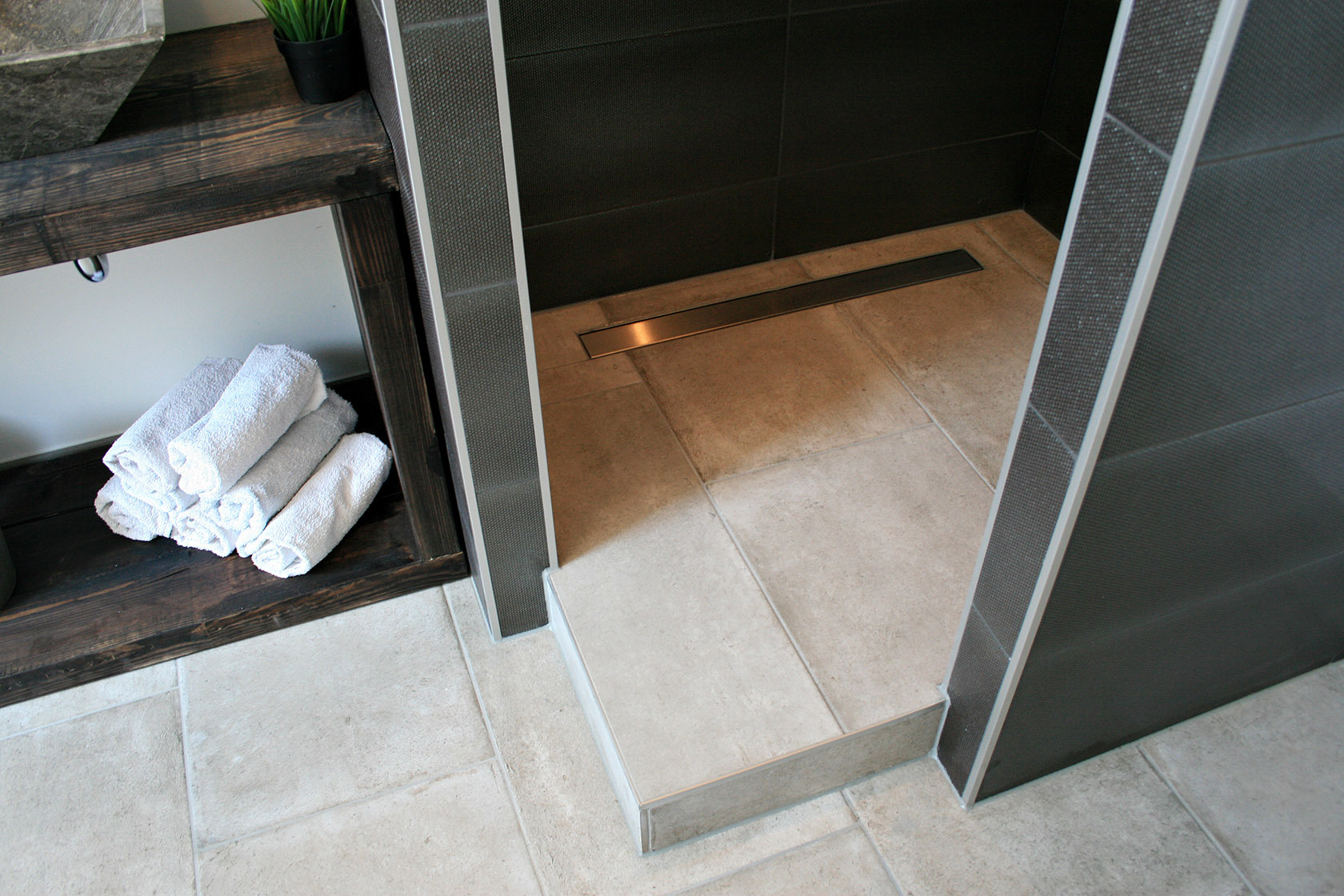
What is a linear drain? It's a way to gravitationally drain water from a room and one of the solutions gaining popularity among those designing a modern bathroom – water flows across the surface of a long rectangle into the siphon, and then it gets into the sewage, thus eliminating the need for a classic shower base. Theoretically, a linear drain can be installed in the wall and the floor – however, in some cases, one solution or the other may look less aesthetic and can impede maintaining cleanliness in the shower. So, what will work better in your bathroom?
In the wall or in the floor
A linear drain is one of the solutions that should be planned already at the stage of designing the bathroom – this approach allows the adjustment of parameters, including the floor height under which the drainage frame and siphon will easily fit. The most crucial aspect when choosing and installing a linear drain is the amount of space available. Most shower siphons are vertical, but recently, horizontal, maximally shortened siphons are being introduced, enabling low installation. Linear drains are installed in various ways due to their design, unlike point drains, where there is no choice in options.
Linear drains offer more possibilities and appear modern. Installing the drain in the wall is an uncommon solution, so it works well in modern bathrooms, while a linear drain installed in the floor will look good in both contemporary and traditional bathrooms. When choosing a drain, you also need to consider the ease of repair. Drains sometimes clog and need proper access. If quick repair of the drain is impossible, you must be prepared for its complete disassembly to remove the defect, which involves additional costs that can often be avoided.
Linear Drain as a Marker of Modernity
A linear drain is increasingly chosen by people renovating their bathrooms. In part, decisions are driven by their aesthetic merits but also practicality. Additionally, manufacturers offer a wide range of multicoloured drains that influence the bathroom's atmosphere. When selecting a drain, it's good to be guided by the style you want to achieve in the interior.
Modernity in the world of bathrooms is more dictated by individual preferences. However, they always have a common part – contemporary technical solutions make daily functioning in the bathroom easier and also serve as decoration. Nowadays, manufacturers not only produce devices to serve us but also to please the eye. A modern bathroom is spacious, well-maintained, and easy to clean. To achieve this, it's enough from the beginning to take care of appropriate accessories and devices that comply with this rule.
Finishes for Linear Drains
The cheapest solutions are cast iron grilles that cover the entire drain while collecting possible deposits. But the most interesting are designer solutions like thin slits where the water quickly disappears – these types of drains, without any protection, are backlit and additionally encased with stainless steel, further emphasizing a modern approach to bathroom design.
A line of gratings is also an interesting solution. The name suggests a simple stylistic solution, but nothing could be further from the truth. Line gratings take on interesting designs, sometimes very complex and artistic. With this type of decorative grating, it is important to carefully consider the installation concept to avoid ruining the entire bathroom project. Therefore, a bathroom can be made in a simple and classic style, while accessories such as decorative drains, siphons, or fittings can give the room a different character.
The crowning touch will be laying matching tiles, which in this case fulfill not only a decorative function but also a practical one. For lining a shower equipped with a linear drain, it is worth choosing tiles of class III or IV abrasion resistance – such products are not porous, thus they do not absorb water and have anti-slip properties. The choice of grout should also not be random – a suitable product for this kind of solution is epoxy grout, which is more flexible, tougher, and more resistant to damage than cement grout.
A Few Tips on Proper Installation
Have you already chosen the right set and are wondering how to install the product correctly so that it functions flawlessly for a long time? Here are a few tips worth remembering during the installation of a linear drain:
- The drain must be installed at the correct angle to properly drain water to the sewage – the gradient of the drainage pipes should be about 2.5%.
- After the installation, it is worth performing a leak test to ensure that the installation does not leak.
- A mandatory step is to carry out waterproofing on all walls that will come into contact with water – this procedure involves securing the floor and walls against water penetration and is executed using a liquid foil.


















